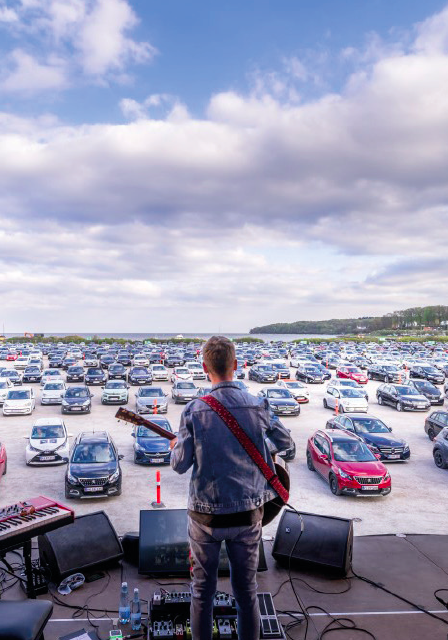Drive-in and digital concerts are starting to pop up all over the US, but are they the right remedy for the live music blues during the coronavirus pandemic?
The Covid-19 outbreak has affected almost every aspect of daily life, bringing with it a revitalised sense of comradery as people pull together in this time of crisis.
While the live music industry has faced innumerable problems throughout the years, it might currently be seeing its greatest challenge yet, with thousands of gigs being cancelled or rescheduled. The day when normality is finally restored and we can descend on our favourite festivals is unquestionably something to look forward to, but in the meantime it’s important to stay positive, and continue to enjoy the music we love.
In an attempt to quench musical thirst, events promoter and venue operator Live Nation recently announced its first ever drive-in concert series, which launched this month with country stars Darius Rucker, Brad Paisley and Jon Pardi. Taking place in amphitheater parking lots, the three-day, nine- show event saw attendees watch the performances from a distance with two parking spaces between each vehicle.
Similarly, Garth Brooks is soon to broadcast a one-night drive-in concert to 300 outdoor theatres nationwide, with a rather steep price tag of $100 per car. He follows the lead of DJ D-Nice and fellow country star Keith Urban, who were some of the first major artists to play drive-in shows during the Covid-19 pandemic. Urban performed a secret show to around 200 front-line healthcare workers in Tennessee in May, describing the event as being like “a tailgate party”.
Here, restrictions remained tight, as concertgoers listened through their car radios and were only permitted to leave their vehicles to use the restroom. You’ve got to give it to these guys; they’re of course trying to make a living as musicians, but are also simply trying to provide fans with some entertainment during the summer months after what has seemed like a never-ending amount of time isolating at home.
So while the wearing of masks remains paramount, it still makes more sense to party in your Pontiac than to meander your way through a sea of intoxicated, sweaty strangers who are likely not following social distancing rules. And yet, while drive-in shows provide a diluted, albeit safe alternative during lockdown and beyond, it is almost impossible to imagine this as the permanent future of live music.
It’s looking like Live Nation, which is unlikely to open the doors on some of its biggest US and UK-based venues before the end of the year, is suffering the most on the business side, with its share price falling from $75 to $29 in March as the lockdown took hold, although the figure is now floating around the $45-50 mark.
These drive- in concerts with limited audiences — the likes of which have subsequently been tried out in Denmark and Germany — may not necessarily ease Live Nation’s hardships, but promoter Peter Taylor has said the company was “excited” to help live music resume. However, any live music lover will know that a concert is often a collective experience, subtly enhanced through micro-interactions with fellow fans.
It’s something that simply cannot be replicated when parked in a car spaced 10 feet apart from your neighbor. It’s about singing along to your favourite song with like-minded music heads, the plethora of smartphones swaying above, the overpriced drinks and the ensuing chaos when you spill half their contents just to get to your prime spot near the stage.
Perhaps most importantly is the loss of a connection between artists and their fans when a windshield stands between them, and it will be interesting to see how these connections are reestablished and developed as lockdown eases. These are things that are sorely missed, but we’ll have to wait until later this year — or even until 2021 — to enjoy them again.




